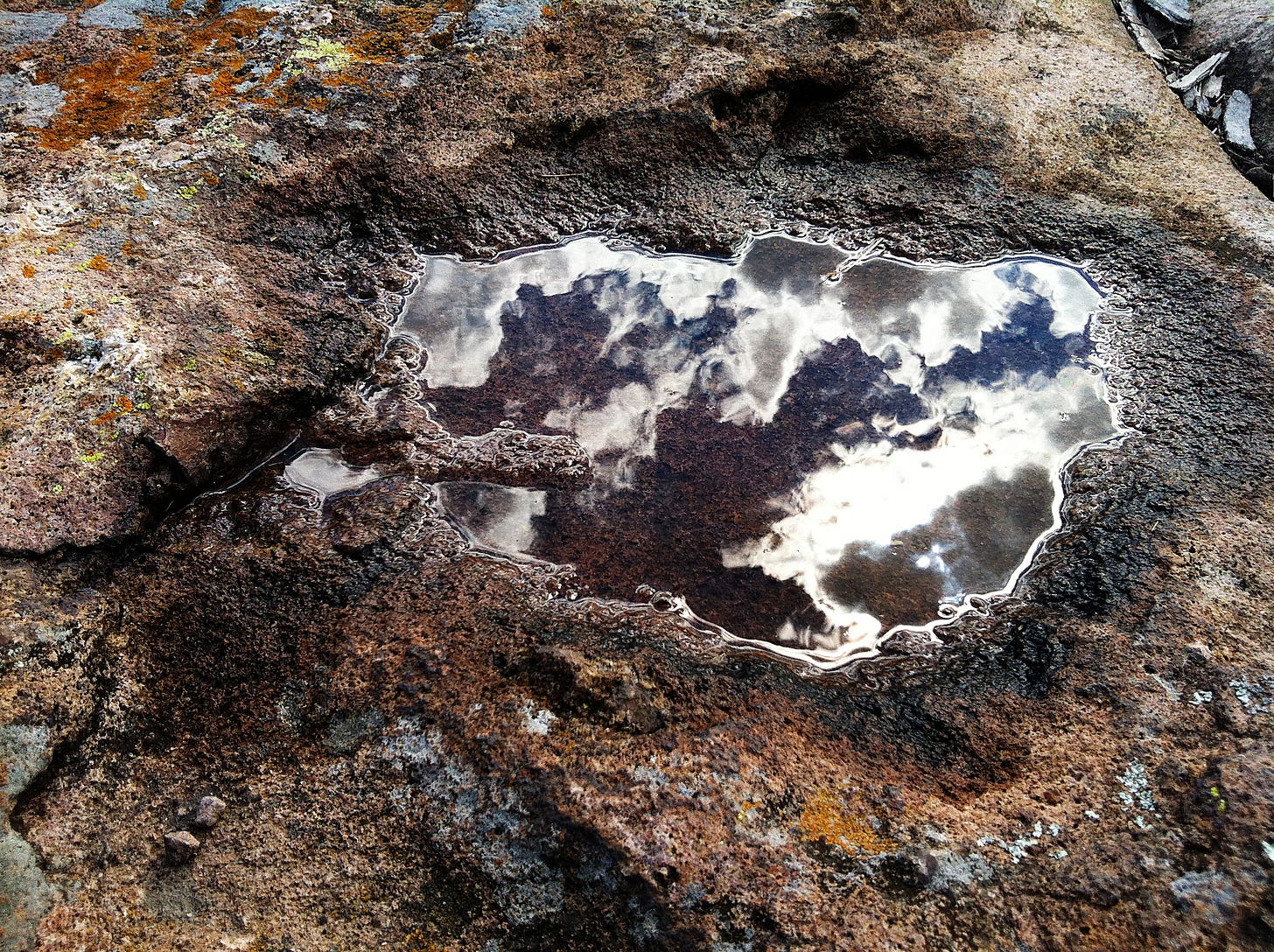I once imagined that life would eventually settle into certainty. That there would come a time when the body steadied, friendships anchored themselves in permanence, and identity fixed itself into a more constant, reassuring shape.
I mistook arrival for destination.
Then midlife arrives—not like a gentle tide, but as a shift in gravity. A deepening into the growing awareness that nothing holds still, not even the self. The body, once obedient, now begins to murmur in unfamiliar ways: stiffness, hesitation, a soft blurring at the edges of memory. The faces of those we love—our parents, our mentors—soften into vulnerability. And behind it all, time moves like water tracing a landscape it never fully remembers, pressing onward, looping back, never asking permission.
Arthur Brooks writes that success, the upward curve of youth, must eventually give way to something gentler: transcendence, wisdom, the art of letting go. In From Strength to Strength, he reminds us that our worth is not defined by endless striving, rather by how we inhabit this inevitable falling away—with grace, with generosity, with the bright patience of acceptance.
We ask: What is a good life, truly?
It is certainly less the series of independent triumphs our younger self once imagined, and more a stitching together of smaller, quieter things—kindness, self-forgiveness, a fierce intimacy with the present moment. A good life reveals itself through surrender, not through conquest.
Psychologists Patricia C. Broderick and Pamela Blewitt describe well-being in later life as a return to essential human needs: autonomy, connection, and purpose, far more enduring than the pursuit of goods or accolades (Broderick & Blewitt, 2020). The good life opens when we let go of our obsession to control and begin instead to participate, walking with humility through the mysteries that carry us.
In the slow heat of the afternoon, my mother and I sit on the terrace, watching the light slide down the old stone walls, listening to the distant sounds of the town—a church bell, a dog barking, the faint rhythm of footsteps on the cobblestone streets. Sometimes we walk a little, pausing to admire a cascade of bougainvillea or a weathered doorway bright with color. Meaning stitches itself into these small acts. Conversation drifts. Silence stretches. We aren’t reaching for anything. Just settling into the preciousness of presence, the grace of being alongside her/each other. Here. Now.
Photo credit: M Fayre
Our culture often mistakes vitality for victory. It celebrates youth, speed, ambition. Yet real vitality may be the capacity to stay awake and alert as everything around us changes—to witness the body falter, the career plateau, the future grow finite—and yet to still love the mystery of this our unfolding life.
Quantum physicists suggest that time may not move forward as we experience it. Some models propose that past, present, and future unfold alongside each other. That linear time is a necessary illusion, a way to find our place inside the mystery. Within this frame, aging reveals itself as a deeper joining—a widening into the fabric of existence itself.
Midlife also marks a turning point in how we make meaning. James Fowler, a theologian and developmental psychologist, described this shift in his stages of faith development. In what he called "conjunctive faith," adults begin to hold paradox and contradiction without the need to resolve them. They taste the bittersweetness of maturity: the losses that carve us out, and the love that fills the hollowed places.
Aging asks us not just to accept change, but to apprentice ourselves to it.
The body, too, becomes a teacher. Joints ache, metabolisms slow, memory hesitates. The body, in its soft rebellions, offers us new instructions: to rest. To forgive. To marvel at what still holds us here. A heart that still beats, lungs that still draw breath, hands that still reach out in search of love, or magic.
Aging carries us beyond surrender, into belonging. Across cultures and centuries, many traditions have understood what aging reveals: that we are more than flesh, more than memory, more than the sum of what we leave behind. Many teach that the soul is not confined to a single lifetime, that consciousness exceeds the brain, that we are sparks of something infinite. When we meditate, pray, create art, or love without condition, we participate in that greater field. Aging, through this view, becomes not a diminishment, but a homecoming.
Quantum entanglement suggests that once two particles connect, they remain linked across space and time. I wonder if human love is much the same. The care my mother offered when I was small, the tenderness she continues to offer even now, reverberates outward—a resonance not lost, but woven deeper into the world.
We move through life thinking we know its shape, its contours, its rules—until age humbles us into seeing again, not with certainty but with wonder. In the late afternoons, sitting quietly beside my mother, I catch glimpses of that pure seeing: the way light pools in the folds of her hands, the way time, once feared, now feels strangely tender.
Photo credit: M Fayre
Aging invites us to loosen our grip on certainty. To marvel anew at the press of bare feet against warm stone, the slow bloom of evening sky, the first cool breath of a changing season. From this loosening, a new kind of dignity emerges—one rooted in integration rather than denial, a weaving together of body, mind, and soul with the reality of impermanence. Trust, in this light, is not resignation but a quiet surrender. A letting go into the deep currents that draw us home.
We carry every version of ourselves within us: the impetuous child, the striving young adult, the restless seeker. All still here, layered into the life still unfolding. Aging doesn’t erase who we have been. It gathers those selves closer, softening the once-sharp edges into something fuller, richer, more complete.
Aging beckons us to soften our grip on certainty. To open—to each stage, each surrender, each recalibration stitch itself tenderly into the life still unfolding within us.
A good life may be one where we are willing to be changed—by love, by loss, by wonder. Where our scars become quiet testaments to the lives we dared to live. Where we step willingly into the shimmering uncertainty and find, to our astonishment, that we are still held.
The river moves. The stars tilt and wheel. Our bodies thin and stoop. And still we love. Still we reach. Still we sing.
The slow brightening continues.
And so do we.






My favorite of your Substack so far. Gorgeous. There are so many lines I love, but I think this is my favorite: "A good life reveals itself through surrender, not through conquest." I feel so much now, in these days leading to a milestone birthday, of what you've written here. Thank you.
Beautiful. You have grown :) And haven’t we all. 😘